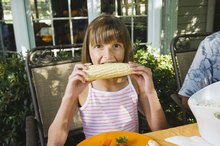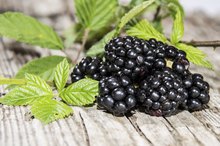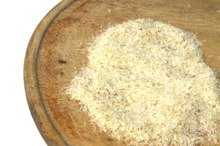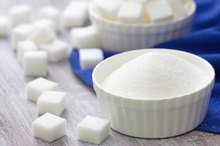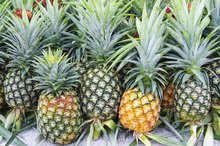What does fact checked mean?
At Healthfully, we strive to deliver objective content that is accurate and up-to-date. Our team periodically reviews articles in order to ensure content quality. The sources cited below consist of evidence from peer-reviewed journals, prominent medical organizations, academic associations, and government data.
- Analytical Biochemistry: Isolation and purification of D-mannose from palm kernel.
- Analytical Biochemistry: Isolation and purification of D-mannose from palm kernel.
- Carbohydrate Research: Isolation of oligomannose-type glycans from bean glycoproteins.
- Carbohydrate Research: Isolation of oligomannose-type glycans from bean glycoproteins.
- Analytical Biochemistry: Preparative purification of a high-mannose type N-glycan from soy bean agglutinin by hydrazinolysis and tyrosinamide derivatization.
- Analytical Biochemistry: Preparative purification of a high-mannose type N-glycan from soy bean agglutinin by hydrazinolysis and tyrosinamide derivatization.
The information contained on this site is for informational purposes only, and should not be used as a substitute for the advice of a professional health care provider. Please check with the appropriate physician regarding health questions and concerns. Although we strive to deliver accurate and up-to-date information, no guarantee to that effect is made.
Foods With Mannose
Mannose is a six-carbon sugar found in a variety of fruits and vegetables. This sugar is not found free in foods, but rather as part of polysaccharide chains attached to a variety of proteins. According to NYU Langone Medical Center, your body can make mannose from glucose, so there are no nutritional recommendations for this sugar 5.
Fruits
A variety of fruits contain high levels of mannose. These include:
- black currants
- red currants
- gooseberries
- cranberries
- cranberry juice
- tomatoes
- apples
- peaches
- oranges
- blueberries
It is also found in palm kernel, the edible oil from palm trees.
Vegetables
Is Glucose Stored in the Human Body?
Learn More
Vegetables are also a good source of mannose. Mannose is also found in carob gum, the gum extracted from the carob plant, and in guar gum, the fiber from the seed of the guar plant. In the guar gum and carob plant, mannose is in the form of galactomannan, which are polymers of mannose and galactose.
- Vegetables are also a good source of mannose.
- In the guar gum and carob plant, mannose is in the form of galactomannan, which are polymers of mannose and galactose.
Herbs and Spices
An herbal source of mannose is the aloe vera plant. Aloe vera contains acemannan, which is a polysaccharide chain of mannose molecules. Mannose is also found in cayenne pepper.
Beans and Legume Sources
Foods Containing Glucose or Fructose
Learn More
Mannose is found in fenugreek. Fenugreek are the small, yellowish brown, stony seeds from the pod of a bean-like plant. In fenugreek, mannose is in the form a galactomannan, a polysaccharide of mannose and galactose. Mannose is also found in soybeans, kidney beans and lima beans.
- Mannose is found in fenugreek.
- In fenugreek, mannose is in the form a galactomannan, a polysaccharide of mannose and galactose.
Processed Foods
Commercially manufactured ice-cream products contain mannose because of the presence of locus bean, or carob gum, and guar gum. Locus bean gum, or carob gum, is used in ice cream to improve texture and reduce melting. Because:
- locus bean gum
- or guar gum is also used in cream cheese
- processed fruits,
- salad dressings
- these foods also contain a certain degree of mannose
- usually in the form of mannose polysaccharides
- or galactomannans
Related Articles
References
- Analytical Biochemistry: Isolation and purification of D-mannose from palm kernel.
- Carbohydrate Research: Isolation of oligomannose-type glycans from bean glycoproteins.
- Analytical Biochemistry: Preparative purification of a high-mannose type N-glycan from soy bean agglutinin by hydrazinolysis and tyrosinamide derivatization.
- Journal of Agriculture and Food Chemistry: Chemical structures of green coffee bean polysaccharides
- NYU Langone Medical Center: Mannose
Writer Bio
Robin Wasserman has been writing and prosecuting biochemical patents since 1998. She has served as a biochemical patent agent and a research scientist for a gene-therapy company. Wasserman earned her Doctor of Philosophy in biochemistry and molecular biology, graduating from Harvard University in 1995.
